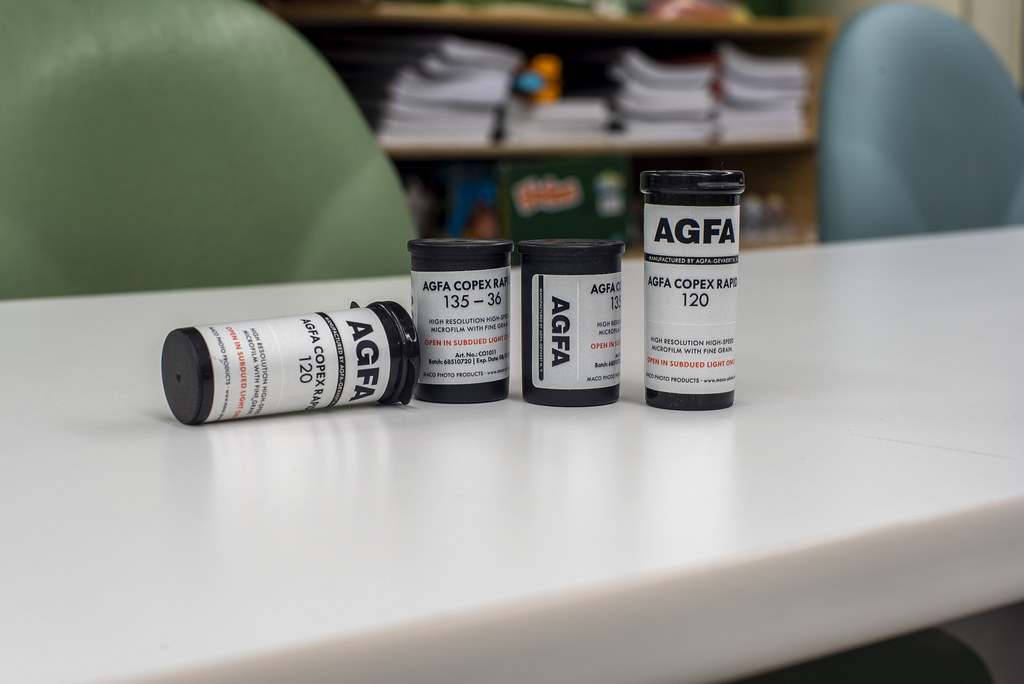Here I go again, sticking my nose into a speciality film. Copex Rapid, as the name on the tin says, is a high-contrast copy film that requires a special developer. Copex Rapid is a faster version of the original Copex. So a stop faster can be helpful in the right conditions. The trouble is that the special developer is not readily available in North America and is even harder to get in Europe. But that hasn’t stopped me before, so I took a chance. You’ll notice that I decided to drop one of my usual developers, Ilfotec HC, as it stated it was high-contrast, and I wanted to get something close to pictorial. I honestly have my good friend Leonid Nikishin to thank for pointing me towards Copex Rapid. You can find his highly technical review in the Further Reading section at the end of the entry.
Film Specs
Type: Panchromatic B&W
Film Base: AHU Polyester
Film Speed: ASA-50, Latitude: +/- 1/3-stop
Formats Avaliable: 35mm (135), 120
Roll 01 – Ilford ID-11
Okay, so this development time, I lifted from the original Copex film, so a bit of a shot in the dark. With only a stop difference between them in speed, I decided to shoot the roll at ASA-25 to match the original speed. Plus, I figured it wouldn’t hurt the film to have a stop over-exposure. And colour me surprised, but it worked, after a fashion. Are these perfect, no, you get a high-contrast look, and I did some post-processing to get better results. While these aren’t the best, they certainly aren’t the worst. I think if I had been better with the metering, averaging instead of metering for a middle-grey. Or going for the shadows and under-exposing by a stop, I could have gotten better results. Either way, besides the high contrast, you get a similarly sharp image with no grain. While ID-11 works on Copex Rapid with the Copex times, I don’t think the film can take that one-stop over-exposure; I guess if I had run the film a little closer to ASA-50, I would have gotten better results, maybe ASA-32 or ASA-40.

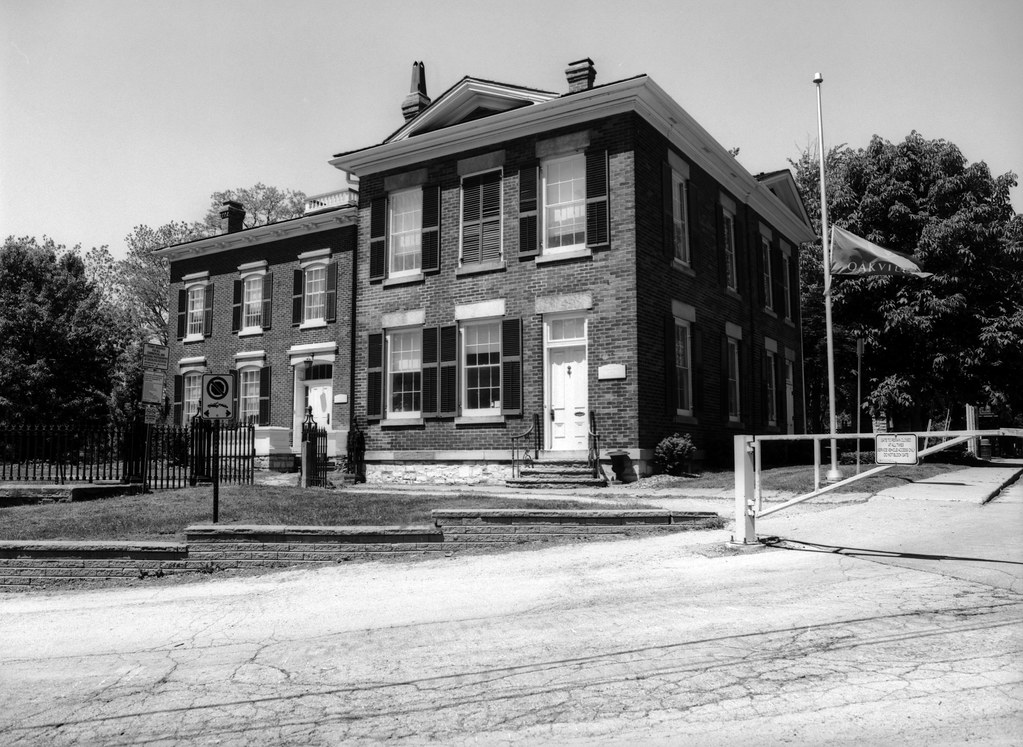
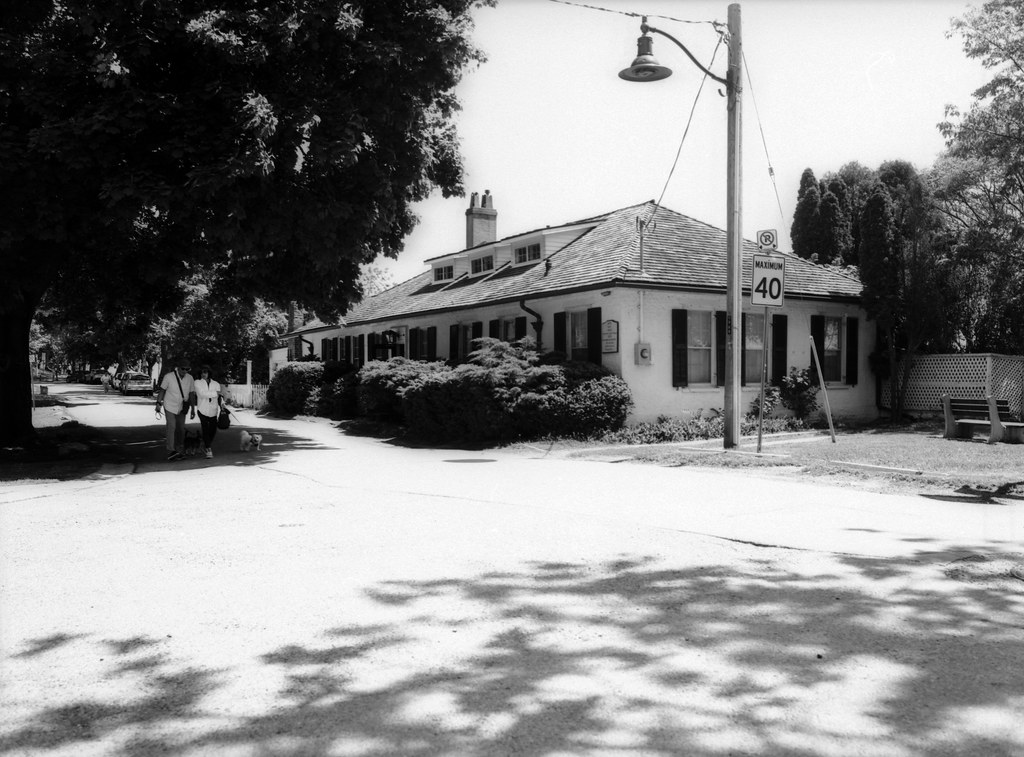
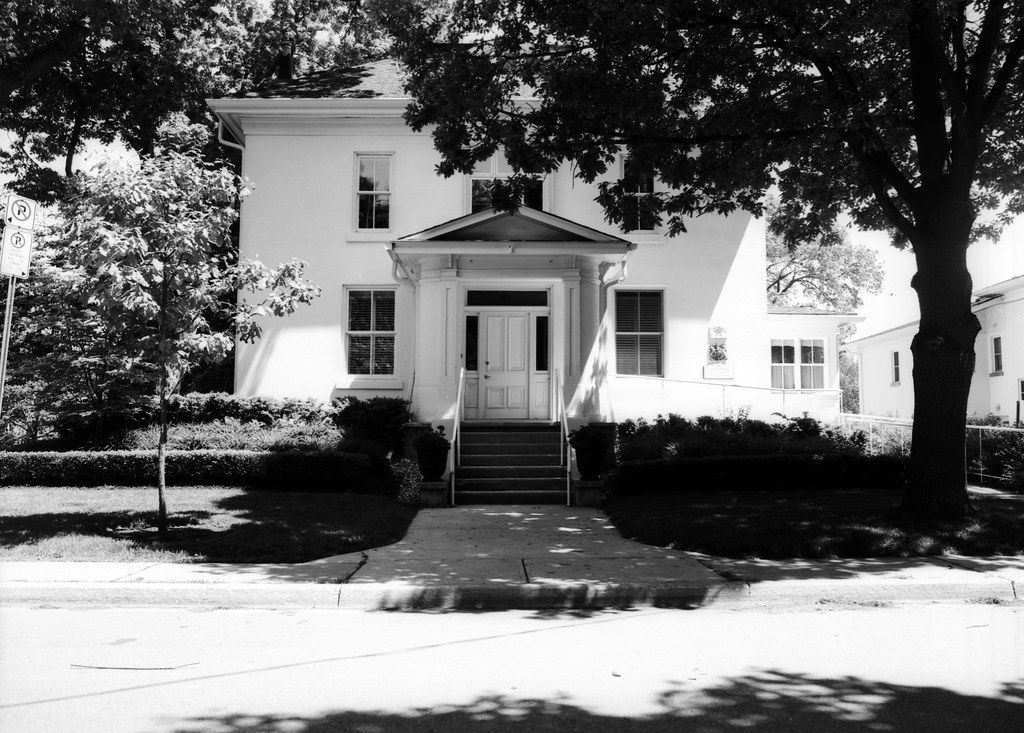
Roll 02 – Adox Rodinal
I’ve only encountered one development time which used 1+100 that wasn’t an hour of letting the film stand, and that was for Kodak Techincal Pan. And I got excellent results from that, so I thought it wouldn’t give bad results here. And it’s the only time that was actively discussed on the Film Photography Podcaster group chat and had been tried by a trusted photographer, John Meadows. The first thing I noticed was that the negatives looked dense and overcooked almost. But there is still enough in there to make them worth scanning. It took a bit of work to pull images out of them, and it surprised me how well these turned out. The tonality is stunning, with a low to medium contrast in the photos, which, combined with the edge sharpness, almost hurts the eyes to how sharp the images appear. Is there grain? Yes, but it’s nearly impossible to see without zooming right into the scans. If I were to use this combination again, some things would change. The first and most effective means of decreasing the density is reducing the development time by at least a minute. The second might be under-exposure, not by much, maybe a half to a third of a stop.


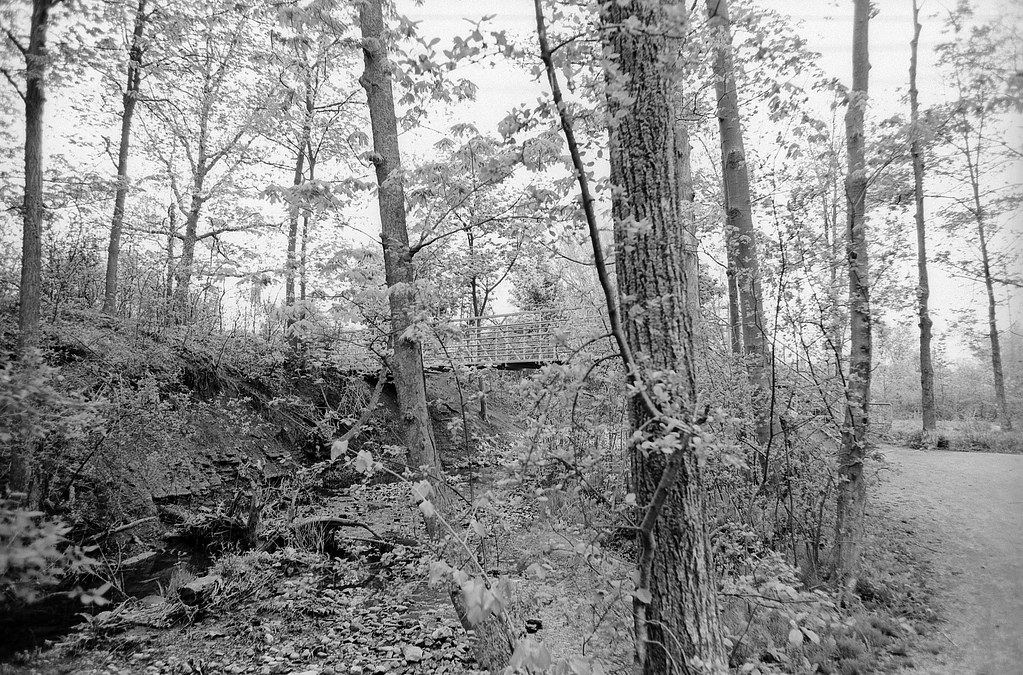
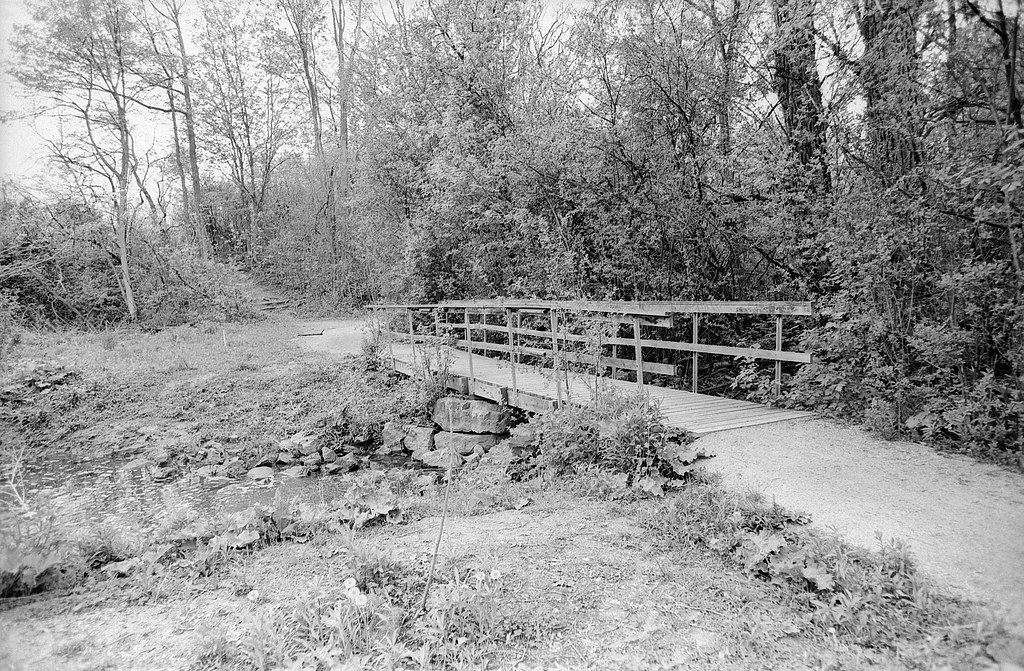
Roll 03 – 510-Pyro
There’s always a bit of apprehension when using a brand new developer on a film you’re not entirely sure about. When I first pulled the negatives out from the tank, they were on the thin side, but I could see some detail. For the film, I rated it slightly under, at ASA-64, a twenty-minute semi-stand development using a dilution of 1+300. Another photographer who has dug into this combo a lot more recommends fifteen minutes using one minute of constant initial agitation then ten seconds (five inversions) every three minutes. I feel that going up to thirty minutes using the prescribed semi-stand method would help. But then again, Pyro is a magic bullet, and despite being thin, they scanned beautifully, and I could pull out a lot of detail in post-processing. When I was in direct overhead and consistent light, I got terrific images, but once the lighting became mixed and under the cover of trees, the midtones vanished. But despite that, the images retain their edge sharpness, fine grain, and high contrast.




Roll 04 – Adox FX-39 II
I’ve done a lot of film reviews and have seen a lot of special instructions on how to handle a film in development. But this methodology takes the cake as the strangest. First, I must thank Leo from 10 Rolls of Film for coming up with this development method and time. You can find his excellent review of Copex Rapid under the Further Reading heading. You have a five-minute pre-soak to start things off, then a modified agitation pattern, initially constant for thirty seconds, then ten seconds every thirty seconds. Then only a two-minute fix, I extended that to three because I prefer to fix for longer. I also dropped the development time from 9.5 to 9 minutes because I used the B’s processor near-constant agitation but pulsed and slow rotation. Are the images high-contrast? Yes, they are, but I ended up with a lot more usable photos than I thought. I honestly feel that some of this comes from the high-contrast light I was shooting in, as when I got into more shaded areas, the mid-tones extended nicely. You get both fine-grain and good edge sharpness as well. I certainly would count FX-39 II as a fine choice for using Copex Rapid for pictorial use.




Final Thoughts
One of the best parts about the film is that the negatives dry flat with almost no noticeable cupping. They curl up, so you have a bit of a fight to load them into your scanner. But that’s a minor problem when compared to cupping. They also scan, even with a high-contrast negative. My Epson V700 and Silverfast 9 SE handled these negatives efficiently, and I required only a bit of work in Photoshop to get them ready for upload. As I mentioned, this is a speciality film and requires a speciality developer, but unlike other films, you don’t have to use the special developer to get good results. And while there are no listed times, I think Rollei RLC would be a good match for Copex Rapid, so if you’re into experimentation it might be worth your time. You have to remember that this film is designed for one thing, making highly detailed copies of documents so that you will have high-contrast no matter what. Pictorial use is limited, but Rodinal and FX-39 II are your best choices and watch out for your light; this film performs best under bright, consistent light. This is also no surprise given the primary purpose of the film. While the film is readily available, the specialised developer is not, but thankfully there are other options but don’t expect the best results. Will I reshoot Copex Rapid? Probably not; despite all the benefits, being unable to control the film easily is a deal-breaker.
Further Reading
Don’t just take my word on Copex Rapid, you can check out the reviews by other awesome camera reviewers!
10 Rolls of Film – Agfa Copex Rapid
Random Camera Blog – Agfa Copex Rapid: One Roll Review
Shoot Film Like a Boss – Agfa Copex Rapid Review
